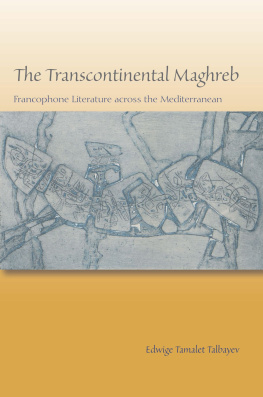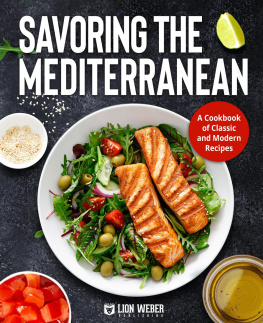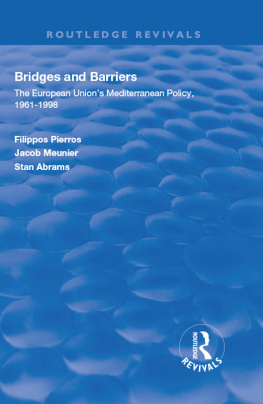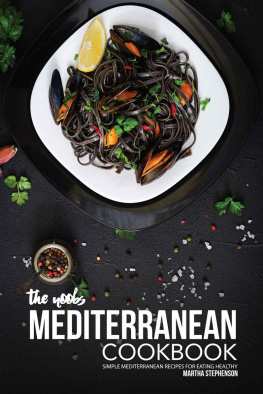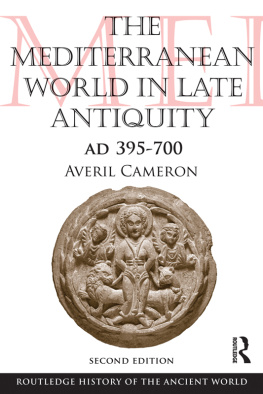THIS BOOK IS MADE POSSIBLE BY A COLLABORATIVE GRANT FROM THE ANDREW W. MELLON FOUNDATION.
Copyright 2017 Fordham University Press
ISBN: 978-0-8232-7517-5
All rights reserved. No part of this publication may be reproduced, stored in a retrieval system, or transmitted in any form or by any meanselectronic, mechanical, photocopy, recording, or any otherexcept for brief quotations in printed reviews, without the prior permission of the publisher.
Fordham University Press has no responsibility for the persistence or accuracy of URLs for external or third-party Internet websites referred to in this publication and does not guarantee that any content on such websites is, or will remain, accurate or appropriate.
Fordham University Press also publishes its books in a variety of electronic formats. Some content that appears in print may not be available in electronic books.
Visit us online at www.fordhampress.com.
Library of Congress Cataloging-in-Publication Data available online at http://catalog.loc.gov.
First edition
The Transcontinental Maghreb
On El Boramar Square
Your eyes
The night filled with condor songs
Watch the crossing of silence
Pan flute, moon weighing anchor
It is a festival of moorings
A call from the Andes.
Tahar Bekri, Le Chant du roi errant (The Song of the Errant King)
On El Boramar Square. With this opaque Catalan moniker begins the twenty-seventh section of Tunisian Tahar Bekris poetic paean to the legendary prince-poet of Arabic letters, Imru al-Qais.creativity, concurrently obscuring its trans-Mediterranean entanglements with the history of Arab incursions into Europe. It is to this past lying beyond European modernitys fascination with the primitive that Bekris note lays claim, to a silenced past, in fact, since the official visitors guide to the village lists conquests by the Phocaeans, the Romans, the Greeks, the Visigoths, the kings of Majorca, and the French, but never the Arabs. This legacy bears witness to the hybrid Mediterranean character of the region, revealing the multidirectional crossings of ideas, styles, religions, and thinkers that mapped out the ancient and medieval Mediterranean as a space of exchange and cross-pollination. Such a history, however, remains frustratingly peripheral, as the resistance of the Office du Tourisme of Collioure to acknowledge the Arab history of the town reveals.
This blind spot underscores the enduring authority of dominant historical framings of the Mediterranean as the cradle of civilization and the birthplace of philosophy and democracyin a word, as the point of origin of a Europe nationalist in form and imperialist in its reach (Iain Chambers, Mediterranean Crossings 15). This disregard for the entangled origins of the Mediterranean contact zone underpins current-day definitions of Europes southern boundaries. It has fractured the space of the sea into two supposedly incommensurable spaces and civilizational models: the northern Mediterranean, European and predominantly Christian, the object of Europes exoticist imagination now reactivated in the lure of low-cost mass-tourism; and the southern shore, purportedly mired in Islam, backward cultural traditionalism, and gender oppression and, in the postArab Spring context, reluctant to implement democracy. Given the recent rekindling of age-old tensions through narratives such as Samuel Huntingtons clash of civilizations theory or the European Unions exclusive definition of nationality and borders, this polarized reading of the Mediterranean seems promised to a prosperous future.
Contrapuntally to these dichotomous narratives, other configurations have emerged that bring to light the infinite imbrications, translations, and overlaps that make the Mediterranean a key space for the study of transnational interactions and tensions. It is these alternative linkages, which stereotypical readings of the region typically obliterate, that this book is interested in retrieving. Against an embedded network of polarized reading grids (Global North vs. Global South, Europe vs. Africa, Christianity vs. Islam), the need to restore the liminal space of the Mediterranean to a place of critical prominence presses on with more urgency than ever. Critically building on early colonial framings of the Mediterranean as a continent liquide, or liquid continent (Audisio), I examine what I call the transcontinental Maghreb: the transnational deployment of the former North African colonies of Morocco, Algeria, and Tunisia within the millennia-old relation that has materially and culturally bound the region to a variety of sites throughout the broader Mediterranean. To a careful observer these connections will seem ubiquitous in the familiar material and symbolic landscapes of the Mediterranean. The traces of these exchanges are inscribed on the columns of the Punic temples in Carthage, Tunisia, and on the dilapidated faade of the Gran Teatro Cervantes in Tangier, Morocco. They infuse the Arab muqarnas (honeycomb ceilings) of the Cappella Palatina in the Palazzo dei Normanni in Palermo, Sicily, and the Arab architecture of the famed mezquita (mosque) in Cordoba, Spain. They are the product of displacement along trade routes and of waves of conquests predating European colonialism, which have made the Maghreb a key site of cultural and linguistic syncretismthe invasions led by the Phoenicians (eighth century BC ), the Romans ( AD 146), the Vandals ( AD 429), the Byzantines ( AD 533), the Arabs ( AD 647), and the Ottomans (sixteenth century), as well as the various Jewish diasporas, starting with the destruction of the first Temple in Jerusalem in 586 BC and culminating in the expulsion of Andalusian Jews from Spain in the wake of the Reconquista in 1492. These material remains braid an alternative narrative anchored in cultural and artistic syncretic practices, which has left its imprimatur on Maghrebi self-perceptions and identifications. Indeed North African authors and critics have emphasized the plural, polyphonic quality of the regions past, revealing alternative, margin-to-margin itineraries that have displaced the cultural primacy of the French metropole.
I aim to retrieve literary engagements with these alternative histories of mobility and contact that map out the Mediterranean not only in terms of domination and antagonism (through patterns of European colonialism or contemporary labor migration) but also as a site of reciprocal exchanges and interconnections. I endeavor to reveal the ever-changing dynamics underpinning the Mediterranean, which has been perpetually reinvented as a space of mobility and creativity through its multiple human and cultural incarnations. My hypothesis is that this complex history has been appropriated throughout the corpus of Maghrebi literature since its early days in the late nineteenth century and that it has fostered the emergence of a transnational Mediterranean consciousness across ethnic and confessional lines. Both historically verified and powerfully mythicized, this ethos has been eager to lay claim to a sedimented identity stretching beyond the Arab, Amazigh, Jewish, and French cultures forced together by colonialism. Doing so, it has served to amend the parameters of the subjects engagement with the nation and with its restricted models of social agency and collectivity. In keeping with the plurilingualism induced by a Mediterranean framework, I rest my argument on an examination of the corpus of Maghrebi texts written in French from the late 1890s to the present, with incursions into texts composed in Arabic and Spanish (respectively, the language of Maghrebi nationalism and nation-building, and the second colonial language of the Maghreb). My focus is on texts that reach across the Mediterranean to more than one geographic or imagined site of contactwhether explicitly or implicitly, materially or symbolicallyto shed light on the central role played by the space of the sea in the elaboration of cultural narratives before and after independence.

